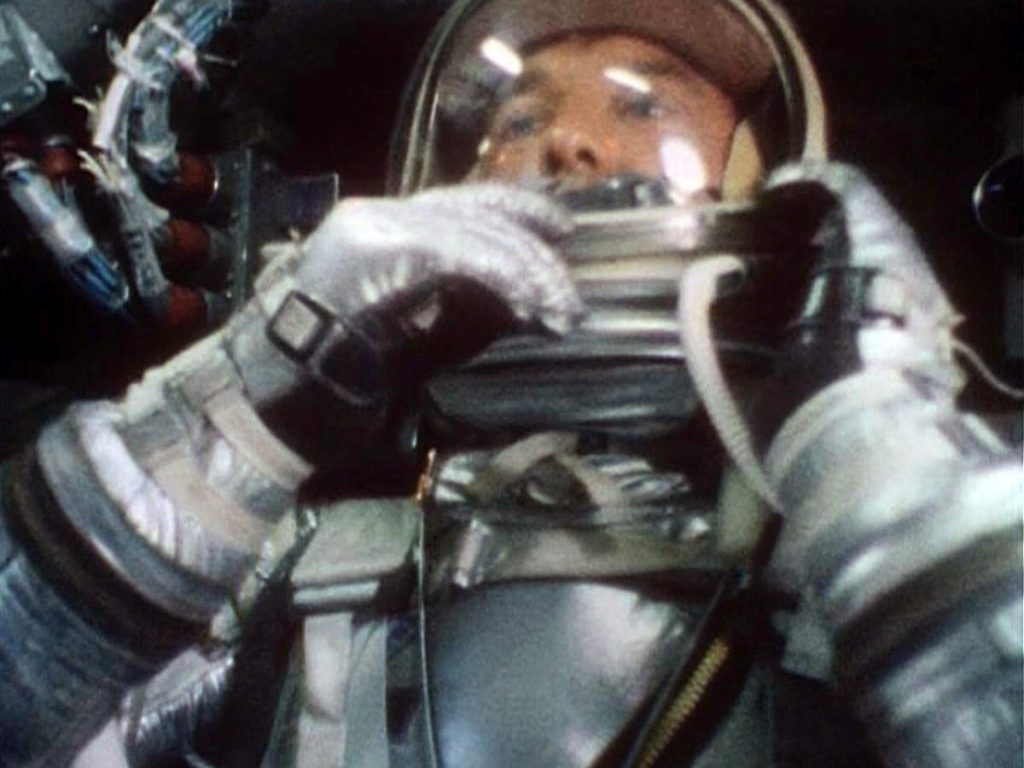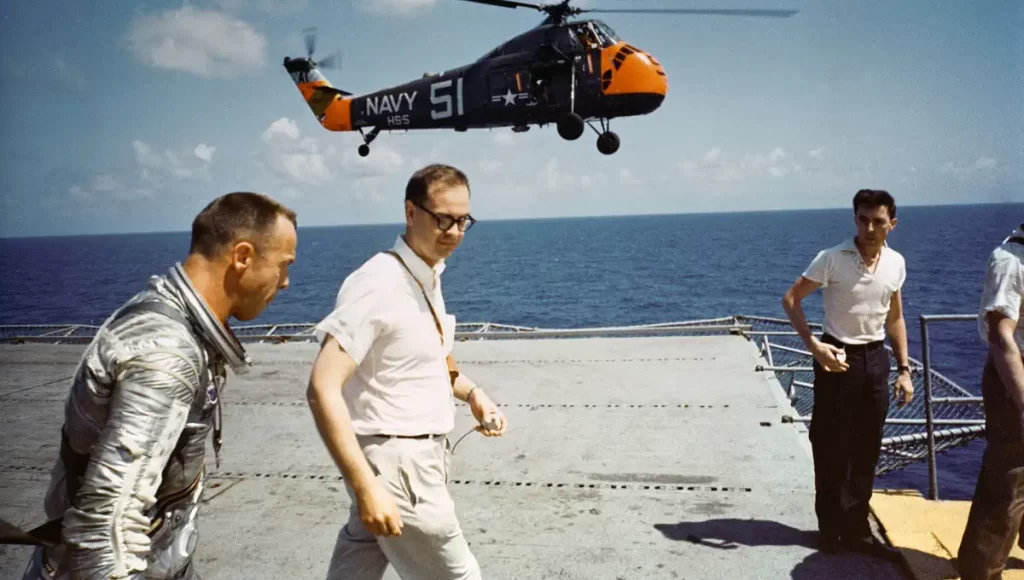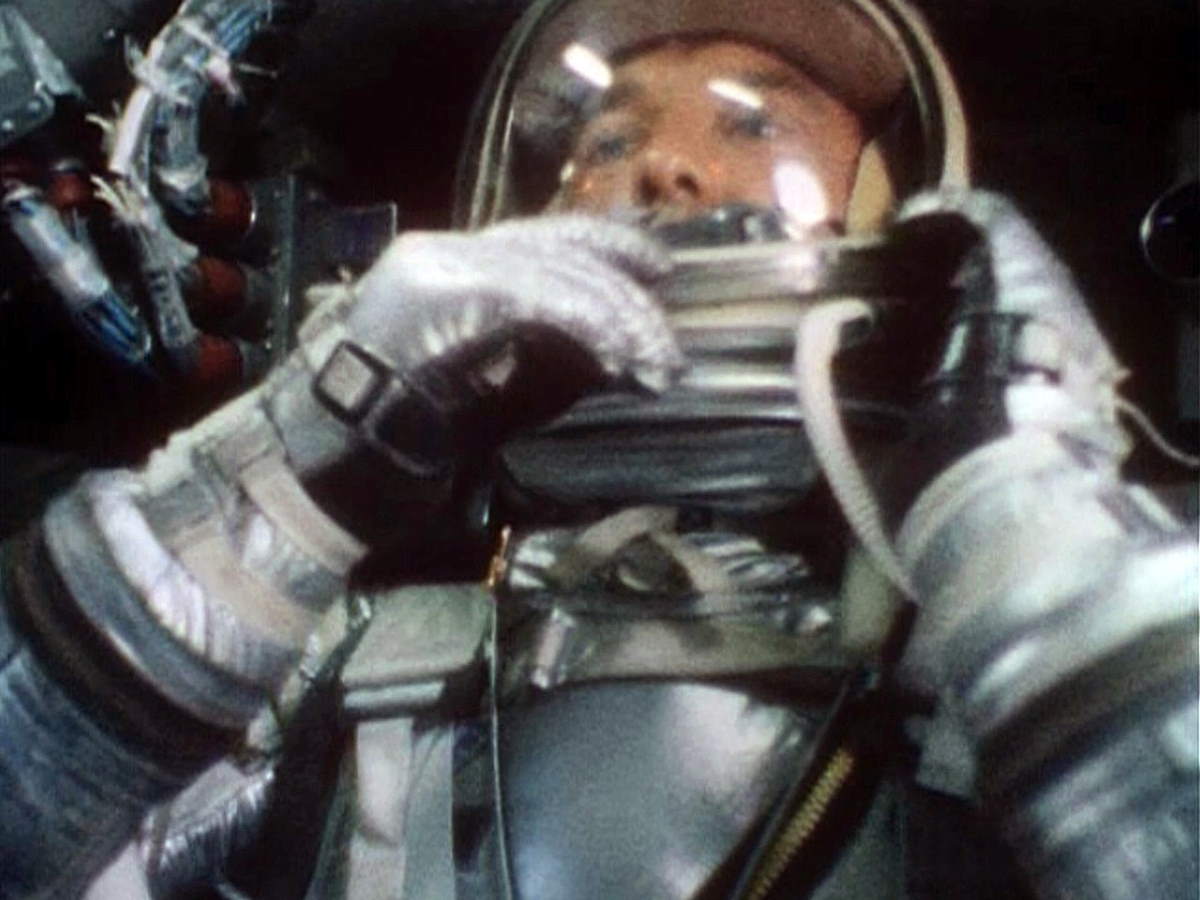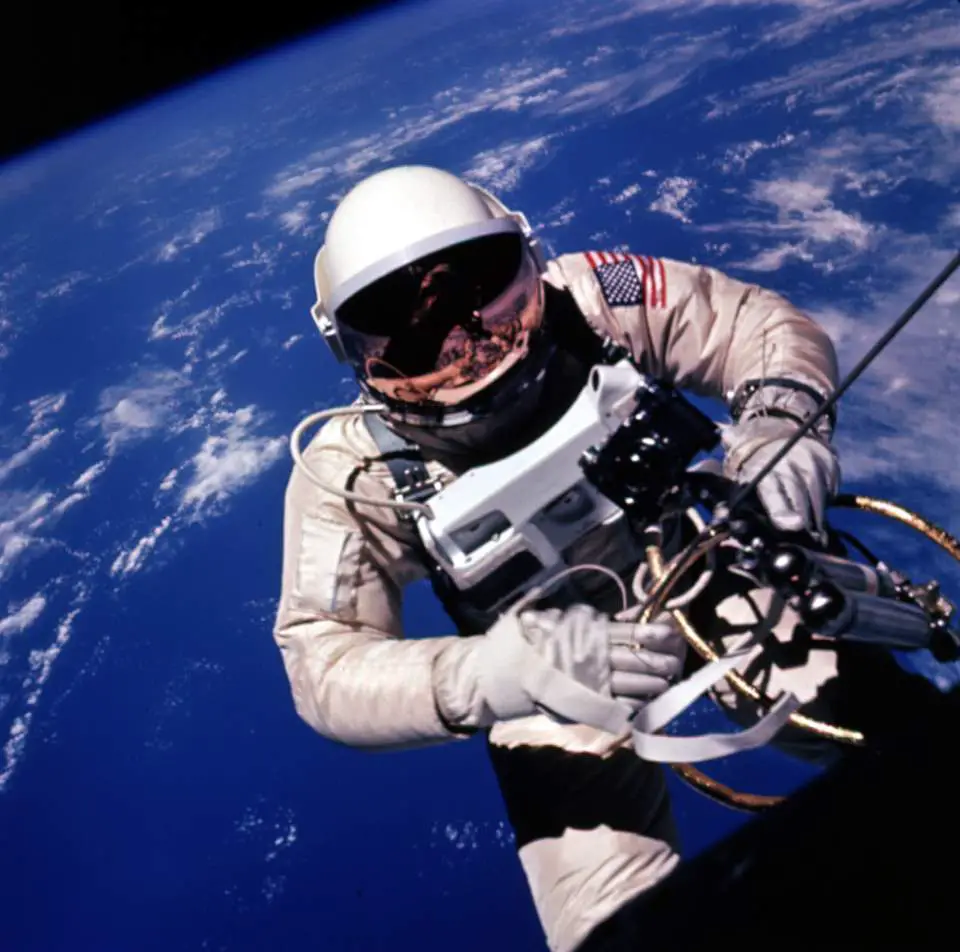On May 5, 1961, American astronaut Alan Shepard (November 18, 1923 – July 21, 1998) performed the first United States human spaceflight. It was also the first human-piloted spaceflight in the history of space exploration. Yuri Gagarin, the first human to fly into space on April 12, 1961, wasn’t controlling the Vostok 1 spacecraft, it was controlled by a computer.
Today’s (May 5) story of what happened this day in Science, Technology, Astronomy, and Space Exploration history.
The first U.S. human spaceflight
1961 was the year that the United States and the Soviet Union found themselves in a race to put the first human being into space. The United States initiated Project Mercury in 1958 with the objective of putting the first American into space and selected its first group of astronauts in 1959 to begin training for that mission – the Mercury Seven.
The Soviets kept their plans secret but began their own human spaceflight program and selected their own team of 20 cosmonauts in 1960. The Soviets won the race in April 1961 when cosmonaut Yuri A. Gagarin completed a single orbit around the Earth aboard his Vostok capsule.
Alan B. Shepard: The first American in space
On May 5, 1961, Alan B. Shepard became the first American in space during a suborbital flight aboard his Mercury capsule named Freedom 7 (also known as the Mercury-Redstone 3).
Just three weeks later, based on the success of Shepard’s brief flight, President John F. Kennedy committed the United States to achieve a lunar landing before the end of the decade.

Project Mercury
The Space Task Group (STG) at NASA’s Langley Research Center in Hampton, Virginia, initiated Project Mercury in 1958 with three goals:
- Orbiting a crewed spacecraft
- Investigating human’s ability to function in space
- Safely recovering both spacecraft and the crew.
NASA contracted the McDonnell Aircraft Corporation of St Louis to build the Mercury spacecraft. Initial plans called for up to seven early suborbital flights (see notes 1) launched on Redstone rockets to test the single-seat spacecraft, followed by Earth orbital missions using the more powerful Atlas booster.
After some early launch failures, the first successful test flight of the Mercury spacecraft without an astronaut onboard took place in December 1960, launched on a suborbital flight atop a Redstone rocket.

In parallel with Mercury spacecraft development, NASA selected its first group of astronauts on April 9, 1959. They were popularly known as the Mercury 7 astronauts.
- M. Scott Carpenter
- L. Gordon Cooper
- John H. Glenn
- Virgil I. “Gus” Grissom
- Walter M. Schirra
- Alan B. Shepard
- Donald K. “Deke” Slayton
They began intensive training in the hope of becoming the first human in space. On Jan. 19, 1961, STG leader Robert R. Gilruth informed the group that Shepard would fly the first suborbital mission, Grissom the second, with Glenn serving as a backup to both of them.
To the public, NASA revealed only that one of the three men would make the first flight, with the actual individual made known only close to the launch. Before the first astronaut flight, NASA tested the Redstone rocket and the Mercury capsule by flying chimpanzee Ham on an identical suborbital mission on January 31, 1961.
Although the flight was mostly successful and the U.S. Navy recovered Ham in excellent shape, a problem with an electrical relay in the Redstone rocket caused NASA to schedule another uncrewed test flight on March 24. That successful flight cleared the way for the flight of the first American astronaut.
But, on April 12, 1961, the Soviet Union stole the prize by launching cosmonaut Yuri A. Gagarin aboard his Vostok capsule, in which he completed a single orbit around the Earth.
Shepard performs the first U.S. human spaceflight
After hundreds of hours of training in simulators, and three simulations inside the capsule itself, Shepard and his backups Grissom and Glenn prepared for the actual flight. Inclement weather scrubbed the first launch attempt on May 2, 1961, and NASA decided it was time to announce that Shepard would indeed be making the first flight.
On May 5, the weather proved more cooperative and Shepard climbed aboard Freedom 7 atop the Redstone rocket poised on Launch Pad 5 at the Cape Canaveral Air Force Station, now the Cape Canaveral Space Force Station, in Florida. Half a million people had gathered on nearby beaches to watch the launch in person.
An estimated 45 million Americans anxiously watched the liftoff on live television, including President Kennedy at the White House. After more than two hours of delays due to technical issues, the rocket engine ignited at 9:34 a.m. Eastern time, propelling Shepard skyward and into the history books.
Video: Freedom 7 – Full Mission
During the mission, Shepard communicated with the Mercury Control Center (MCC) at Cape Canaveral. Flight Director Christopher C. Kraft designed the control center to monitor every aspect of the mission. Fellow astronaut Slayton served as the capsule communicator, or CAPCOM, speaking directly with Shepard in Freedom 7.
- The Redstone rocket’s engine shut off as planned 2 minutes, 22 seconds after liftoff, with the launch escape tower jettisoning immediately thereafter.
- After another 10 seconds, the spacecraft separated from the booster, and Shepard began to experience weightlessness.
- At 3 minutes 10 seconds into the flight, Shepard took over manual control of the spacecraft’s attitude and found that he could control Freedom 7’s orientation with remarkable ease and precision. He conducted visual observations of the Earth below and took some photographs of the cloud-covered Atlantic Ocean.
- At 5 minutes, 11 seconds, Freedom 7 reached the highest point of its ballistic flight at 116 miles and began descending toward the Earth.
- Fifteen seconds later the retro-fire maneuver took place.
- At an altitude of 230,000 feet, Freedom 7 encountered the top layers of the Earth’s atmosphere, ending Shepard’s time in weightlessness after five minutes.
- During the deceleration, he experienced g-loads of up to 11 times the force of Earth’s gravity, but only for a few seconds.
- A drogue parachute was deployed at 22,000 feet to slow and stabilize the spacecraft, followed by the main parachute at 10,000 feet.
- A landing bag deployed at the bottom of the spacecraft to further cushion the impact, and after a flight of 15 minutes 22 seconds, Freedom 7 splashed down in the Atlantic Ocean north of the Bahama Islands and 300 miles southeast of Cape Canaveral, completing Shepard’s flight as the first American in space.
Freedom 7 splashed down just four miles from the prime recovery ship – an aircraft carrier called the U.S.S. Lake Champlain (CVS-39). Recovery forces deployed from U.S.S. Lake Champlain retrieved Shepard and his capsule within 20 minutes of splashdown and delivered them onto the flight deck.

Shepard went below decks for a brief medical exam and a congratulatory phone call from President Kennedy. At a press conference afterward, the President hinted that he would soon be seeking more funding for a greatly expanded space program. Less than two and a half hours after arriving aboard the Lake Champlain, Shepard boarded a plane that took him the Grand Bahama Island for more in-depth medical examinations.
Meanwhile, a helicopter retrieved Freedom 7 from Lake Champlain and delivered it to Cape Canaveral. After initial inspections, the capsule traveled to Paris to go on exhibit on May 25 at the International Aeronautical Show.
The Freedom 7 capsule is on display at the Smithsonian’s National Air and Space Museum Stephen F. Udvar-Hazy Center in Chantilly, Virginia. A recreation of the MCC is on display inside the Kurt Debus Center at NASA’s Kennedy Space Center’s Visitor Complex.
Notes
- When a spacecraft reaches outer space, but its trajectory intersects the atmosphere or surface of the gravitating body from which it was launched (in this case, Earth) so that it will not complete one orbital revolution, this is called a “suborbital spaceflight”.
Sources
- “Alan Shepard Becomes the First American in Space” on the NASA website
- Who Was Alan Shepard? on the NASA website
- Mercury-Redstone 3 on Wikipedia
- Alan Shepard on Wikipedia
- Moon Landings: All-Time List [1966-2025] - February 2, 2025
- What Is Max-Q and Why Is It Important During Rocket Launches? - January 16, 2025
- Top 10 Tallest Rockets Ever Launched [2025 Update] - January 16, 2025

